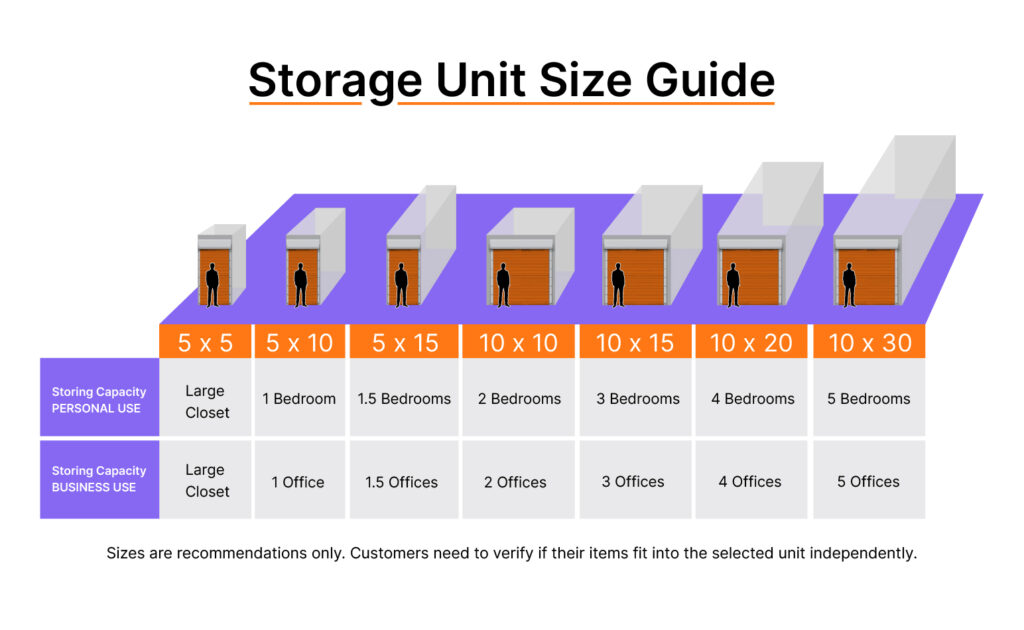Choosing the right self-storage unit depends on various factors, such as size, location, security, and additional features. Whether you need to store seasonal decorations, business inventory, or valuable possessions, selecting the right unit is crucial to ensure convenience and safety. With this comprehensive guide, you can make an informed decision tailored to your storage needs.
1. Determine What You Need to Store
Before selecting a storage unit, take inventory of the items you plan to store. Are you storing large furniture, household appliances, or a few seasonal decorations? Bulky items require larger storage units, whereas documents or small personal items can be accommodated in compact spaces. Additionally, consider whether you need short-term or long-term storage, as this may influence the type of unit you choose.
2. Choose the Right Storage Unit Size
Storage units come in various sizes, ranging from small lockers (1m²) to large warehouse-sized spaces (over 20m²). It’s important to choose a unit that provides enough space for your belongings while avoiding unnecessary extra costs.
- Small units (1m² – 3m²): Ideal for personal items, seasonal decorations, or boxes of documents.
- Medium units (4m² – 10m²): Suitable for furniture, small business inventory, or the contents of a one-bedroom apartment.
- Large units (11m² – 20m²+): Best for storing household goods from a multi-room apartment, large office equipment, or even vehicles.
Many storage providers offer online calculators or expert guidance to help you determine the best size for your needs.
3. Consider the Storage Facility Location
The location of your storage unit matters, depending on how frequently you need to access your belongings.
- If you need regular access, such as for business inventory or frequently used household items, choose a facility close to your home or workplace.
- If you are storing long-term items that you don’t need immediate access to, a facility in a less central location may be more cost-effective.
- Consider the facility’s accessibility, including opening hours and ease of transportation. Some facilities offer 24/7 access, while others have restricted hours.
4. Consider Climate Control
Certain items are sensitive to extreme temperatures, humidity, and moisture. If you plan to store delicate belongings such as electronics, artwork, musical instruments, antiques, or important documents, choosing a climate-controlled unit is essential.
Climate-controlled units maintain a stable temperature and humidity level, protecting your valuables from mold, corrosion, and warping. These units may be slightly more expensive but offer peace of mind, especially for valuable or irreplaceable items.
5. Compare Prices, Security, and Additional Features
Not all storage facilities provide the same level of service. Before making a decision, compare multiple providers based on:
- Pricing: Check if pricing is based on unit size, rental duration, and additional services such as insurance or climate control.
- Security: Ensure the facility has surveillance cameras, gated entry, alarm systems, and on-site staff.
- Access: Some storage companies offer drive-up access, allowing you to load and unload easily, while others require navigating indoor corridors.
- Insurance Options: Some facilities provide storage insurance for added protection against theft or damage.
- Special Discounts: Look for promotions such as first-month-free deals or long-term rental discounts.
6. Check Customer Reviews and Facility Reputation
A well-reviewed storage facility is more likely to offer reliable service and security. Before finalizing your decision, read customer reviews and testimonials to understand other users’ experiences.
Find the Perfect Storage Unit via MyStorage
By following these detailed steps and comparing different storage providers through MyStorage, you can easily find a storage unit that meets your needs and budget. Take the time to evaluate size, location, security, and cost to ensure you make the best choice.
